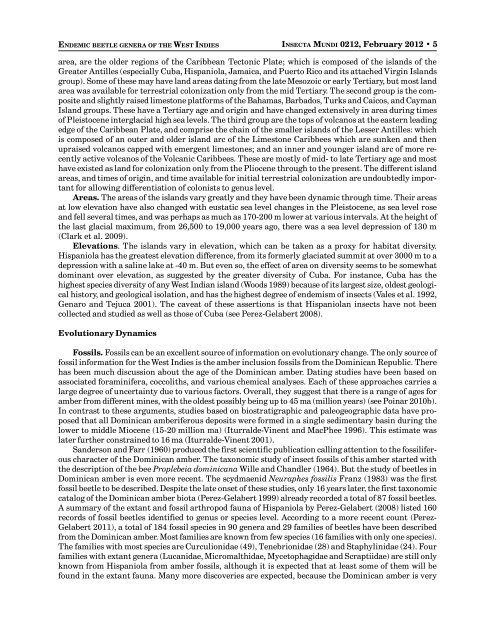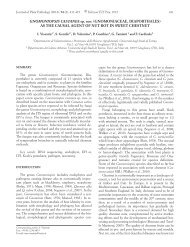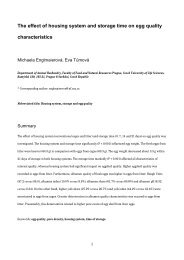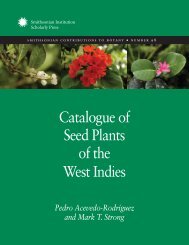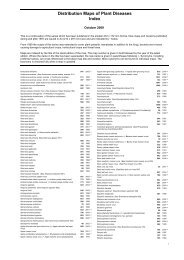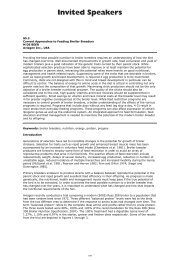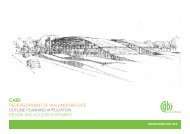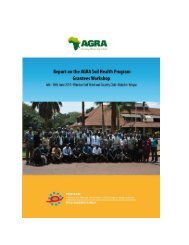0212 insecta mundia - CABI
0212 insecta mundia - CABI
0212 insecta mundia - CABI
Create successful ePaper yourself
Turn your PDF publications into a flip-book with our unique Google optimized e-Paper software.
ENDEMIC BEETLE GENERA OF THE WEST INDIES<br />
INSECTA MUNDI <strong>0212</strong>, February 2012 • 5<br />
area, are the older regions of the Caribbean Tectonic Plate; which is composed of the islands of the<br />
Greater Antilles (especially Cuba, Hispaniola, Jamaica, and Puerto Rico and its attached Virgin Islands<br />
group). Some of these may have land areas dating from the late Mesozoic or early Tertiary, but most land<br />
area was available for terrestrial colonization only from the mid Tertiary. The second group is the composite<br />
and slightly raised limestone platforms of the Bahamas, Barbados, Turks and Caicos, and Cayman<br />
Island groups. These have a Tertiary age and origin and have changed extensively in area during times<br />
of Pleistocene interglacial high sea levels. The third group are the tops of volcanos at the eastern leading<br />
edge of the Caribbean Plate, and comprise the chain of the smaller islands of the Lesser Antilles: which<br />
is composed of an outer and older island arc of the Limestone Caribbees which are sunken and then<br />
upraised volcanos capped with emergent limestones; and an inner and younger island arc of more recently<br />
active volcanos of the Volcanic Caribbees. These are mostly of mid- to late Tertiary age and most<br />
have existed as land for colonization only from the Pliocene through to the present. The different island<br />
areas, and times of origin, and time available for initial terrestrial colonization are undoubtedly important<br />
for allowing differentiation of colonists to genus level.<br />
Areas. The areas of the islands vary greatly and they have been dynamic through time. Their areas<br />
at low elevation have also changed with eustatic sea level changes in the Pleistocene, as sea level rose<br />
and fell several times, and was perhaps as much as 170-200 m lower at various intervals. At the height of<br />
the last glacial maximum, from 26,500 to 19,000 years ago, there was a sea level depression of 130 m<br />
(Clark et al. 2009).<br />
Elevations. The islands vary in elevation, which can be taken as a proxy for habitat diversity.<br />
Hispaniola has the greatest elevation difference, from its formerly glaciated summit at over 3000 m to a<br />
depression with a saline lake at -40 m. But even so, the effect of area on diversity seems to be somewhat<br />
dominant over elevation, as suggested by the greater diversity of Cuba. For instance, Cuba has the<br />
highest species diversity of any West Indian island (Woods 1989) because of its largest size, oldest geological<br />
history, and geological isolation, and has the highest degree of endemism of insects (Vales et al. 1992,<br />
Genaro and Tejuca 2001). The caveat of these assertions is that Hispaniolan insects have not been<br />
collected and studied as well as those of Cuba (see Perez-Gelabert 2008).<br />
Evolutionary Dynamics<br />
Fossils. Fossils can be an excellent source of information on evolutionary change. The only source of<br />
fossil information for the West Indies is the amber inclusion fossils from the Dominican Republic. There<br />
has been much discussion about the age of the Dominican amber. Dating studies have been based on<br />
associated foraminifera, coccoliths, and various chemical analyses. Each of these approaches carries a<br />
large degree of uncertainty due to various factors. Overall, they suggest that there is a range of ages for<br />
amber from different mines, with the oldest possibly being up to 45 ma (million years) (see Poinar 2010b).<br />
In contrast to these arguments, studies based on biostratigraphic and paleogeographic data have proposed<br />
that all Dominican amberiferous deposits were formed in a single sedimentary basin during the<br />
lower to middle Miocene (15-20 million ma) (Iturralde-Vinent and MacPhee 1996). This estimate was<br />
later further constrained to 16 ma (Iturralde-Vinent 2001).<br />
Sanderson and Farr (1960) produced the first scientific publication calling attention to the fossiliferous<br />
character of the Dominican amber. The taxonomic study of insect fossils of this amber started with<br />
the description of the bee Proplebeia dominicana Wille and Chandler (1964). But the study of beetles in<br />
Dominican amber is even more recent. The scydmaenid Neuraphes fossilis Franz (1983) was the first<br />
fossil beetle to be described. Despite the late onset of these studies, only 16 years later, the first taxonomic<br />
catalog of the Dominican amber biota (Perez-Gelabert 1999) already recorded a total of 87 fossil beetles.<br />
A summary of the extant and fossil arthropod fauna of Hispaniola by Perez-Gelabert (2008) listed 160<br />
records of fossil beetles identified to genus or species level. According to a more recent count (Perez-<br />
Gelabert 2011), a total of 184 fossil species in 90 genera and 29 families of beetles have been described<br />
from the Dominican amber. Most families are known from few species (16 families with only one species).<br />
The families with most species are Curculionidae (49), Tenebrionidae (28) and Staphylinidae (24). Four<br />
families with extant genera (Lucanidae, Micromalthidae, Mycetophagidae and Scraptiidae) are still only<br />
known from Hispaniola from amber fossils, although it is expected that at least some of them will be<br />
found in the extant fauna. Many more discoveries are expected, because the Dominican amber is very


